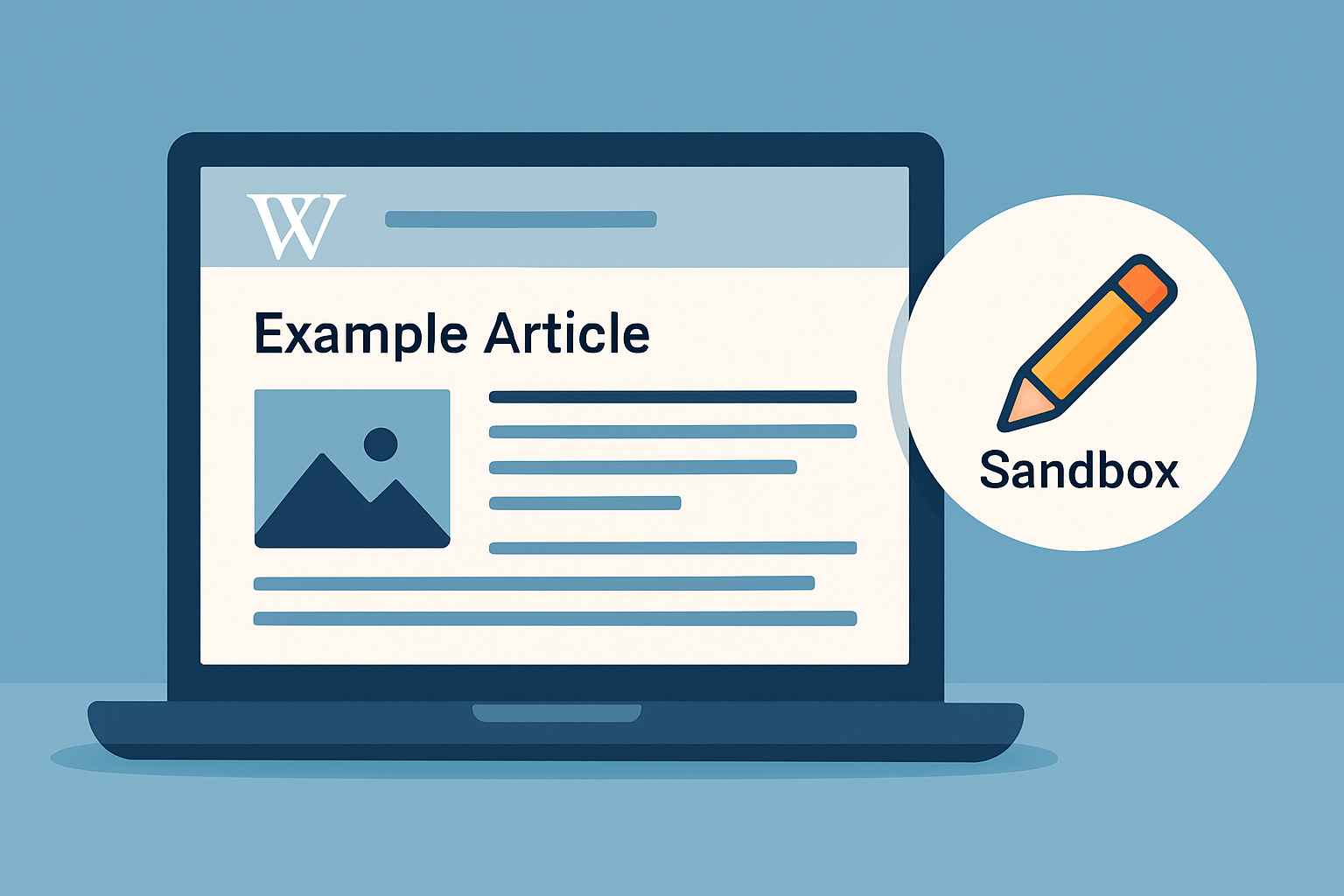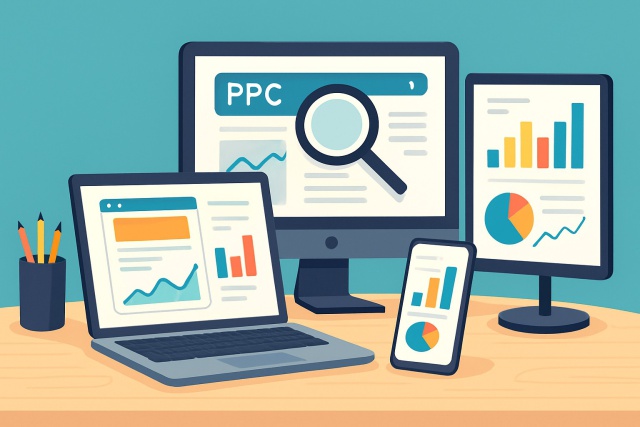How to create a new Wikipedia page that lasts


Learning how to create a new Wikipedia page that stands the test of time takes more than just throwing words onto a screen—it’s about carefully following the site’s clear-cut guidelines and standards. New pages often get the boot because they don’t quite hit the mark on notability or lean on shaky sources.
Wikipedia leans heavily on its notability and verifiability policies to keep things trustworthy.
Taking a Closer Peek at Wikipedia’s Notability and Verifiability Guidelines
Notability means a topic has attracted a fair bit of attention from trustworthy independent sources enough to warrant its own article. Usually these reliable sources are your go-to heavyweights like respected news outlets, academic journals and well-published books. For instance, a local business that lands a spot in national news is generally considered more notable than one mentioned on social media or self-published websites.
- Established newspapers and major media outlets usually bring solid verification to the table so you can generally trust what they present.
- Peer-reviewed academic journals and respected university presses tend to be go-to references when you really want to be sure.
- Books from reputable publishers are usually reliable, though you sometimes need to be cautious if they are self-published.
- Blogs, personal websites and social media posts often fall short on reliability so take them with a grain of salt.
- Press releases and promotional materials generally don’t have independent verification behind them so they’re best treated as a starting point rather than gospel.
- Notability often calls for multiple independent sources that dive into the topic in detail. It is like getting several witnesses to back up the story.
- Relevance and lasting historical or cultural significance tend to strengthen notability claims and give them that extra bit of staying power.
A lot of new Wikipedia pages end up deleted because the subject does not hit the notability mark or the content relies on sources that are tricky to verify or biased. Other common pitfalls include a promotional tone, a lack of independent references or covering topics that are already well known. To sidestep these issues, it is best to write in a neutral straightforward style, back up your claims with reliable sources and check those sources carefully before publishing. It is also key to avoid conflicts of interest by steering clear of self-promotion and to stick closely to Wikipedia's content policies from the very beginning.
Getting Ready to Create Your Wikipedia Page A Quick Heads-Up
Start by rounding up a solid collection of reliable and independent sources. This research step is absolutely key—it helps confirm your subject’s notability while backing everything up with citations you can actually trust.
- Track down at least three to five independent sources that dive into your topic with real depth. No skimming the surface here.
- Make sure you gather all the citation details: author, title, publication, date, and the URL if it’s online. Complete info is your best friend.
- Pinpoint key facts, achievements, or milestones that are clearly spelled out. These nuggets will really make your work shine.
- Take a good look at similar Wikipedia articles to get a feel for the usual rhythm and tone. It’s like getting a sneak peek behind the curtain before the show starts.
Creating a Wikipedia account comes with a bunch of handy perks. You get to create and edit pages, fiddle around in the sandbox to practice without fear and slowly build up your rep within the community. The signup process is a breeze. Just pick a username, enter your email and verify your account.
Step-By-Step Guide to Creating a New Wikipedia Page
So, you are thinking about making a splash on Wikipedia by creating a brand-new page. It might seem a bit daunting at first, but stick with me—breaking it down step by step makes the whole process a lot less intimidating. Whether you are eager to share knowledge or just curious about how the wiki world works, this guide will walk you through the essentials with ease.
Create a Wikipedia user account then spend some quality time tinkering with edits in your sandbox. It’s the best way to get cozy with the formatting and style quirks before diving in for real.
Take a careful stroll through Wikipedia to make sure no one’s already tackled your topic or something very close. This legwork saves you from reinventing the wheel.
Draft your article in the sandbox using a neutral tone and organize your thoughts with clear sections. Clarity is king here.
Pepper your draft with inline citations for every fact using the right Wikipedia referencing templates to keep everything verifiable and aboveboard.
Once you’ve got a solid draft, submit it for review through the Articles for Creation process if it’s available or reach out to seasoned editors for feedback.
When your draft hits all the right notes, move the page to the mainspace and keep a watchful eye on it for community feedback or edits—think of it as your article’s public debut.

Editing a draft Wikipedia article in the sandbox environment to prepare for publication
Writing in Wikipedia’s neutral point of view (NPOV) is about keeping things fair and square and steering clear of biased or promotional language. It’s a good idea to stick to solid facts and avoid adjectives that imply judgment or approval. For example, instead of labeling something as "the best innovative product" you might say "a product that introduced xyz features." Rely on data that anyone can verify. Make sure to clearly attribute opinions to their sources and avoid slogans or marketing buzzwords.
Common Challenges and a Few Tried-and-True Ways to Tackle Them
New Wikipedia pages often face deletion proposals, edit disputes or calls for extra citations. Navigating these hurdles with professionalism can help your article stand the test of time.
- Always reply courteously to deletion notices and provide clear proof that the topic is truly notable. You’d be surprised how much a polite tone can smooth things over.
- If something feels off or tricky, bring it up on the article’s talk page and collaborate with fellow editors because teamwork usually gets things moving.
- Beef up the article by adding reliable, independent sources whenever citations are lacking since solid references are the backbone of any good Wikipedia page.
- Reach out to seasoned Wikipedia editors or join WikiProjects related to your topic for helpful advice and some moral support along the way.
Key Tips for Keeping Your Wikipedia Page Updated and Well-Maintained (Without Pulling Your Hair Out)
Once you've learned how to create a new Wikipedia page and it goes live, you'll want to watch for signs of vandalism or outdated info and policy shifts. Regularly updating it with reliable new sources keeps your content accurate and in line with Wikipedia's standards.
- Keep an eye on your watchlist to get timely alerts whenever someone tweaks or updates your page. It’s like having a little watchdog keeping you in the loop.
- Drop by the Wikipedia editor community now and then because it’s the best way to stay on top of evolving guidelines and pick up a few best practices along the way.
- Make sure to include recent and trustworthy sources so your entry truly reflects the latest developments and doesn’t feel stale.
- Aim for a tone that’s neutral and factual, backed up by solid references. This usually helps avoid those frustrating reversions or removals down the road.
Frequently Asked Questions
What types of sources does Wikipedia consider reliable for notability?
Wikipedia generally leans on reputable sources like well-known newspapers, peer-reviewed journals and books from respected publishers. It’s best to steer clear of self-published material, press releases or social media since these often lack independent verification and can muddy the waters. To establish notability, you’ll want several solid sources that really dig into the topic not just skim the surface.
Can I create a Wikipedia page about my own business or product?
You can but it’s a bit of a tightrope walk due to potential conflicts of interest. Wikipedia frowns on content that feels like a sales pitch. It’s far better to have neutral, well-sourced information crafted by an independent editor. Before diving in, make sure your subject clearly passes the notability test with solid third-party coverage backing it up.
How long does it take for a new Wikipedia page to be approved?
The review process can be quite a slow burn—sometimes stretching out weeks or even months after you submit drafts through Articles for Creation. Staying active by responding promptly to feedback and beefing up your citations can speed things along. Keep a close eye on your page and jump on any editor requests quickly to avoid delays.
What should I do if my Wikipedia page gets flagged for deletion?
Try to keep your cool and tackle the issue constructively. Use the talk page to provide more reliable sources that back up your page’s notability. Work with editors to improve the content rather than getting into any back-and-forth arguments. Focusing on verifiable facts and following Wikipedia’s policies is your best bet to strengthen your case.
Is it necessary to have a Wikipedia account to create a page?
Yes, you’ll need an account to create or edit pages. Having one also unlocks handy tools like the sandbox for drafting content and the watchlist to keep tabs on page changes. Signing up doesn’t just add credibility—it also helps you keep track of your contributions without breaking a sweat.
How often should I update my Wikipedia page after it’s published?
Keeping your page up to date is key. Watch out for vandalism, outdated info or fresh sources popping up. Adding new, reliable references helps keep things current but try not to go overboard with edits. The watchlist is a great tool to monitor changes others make so you’re always in the loop.




